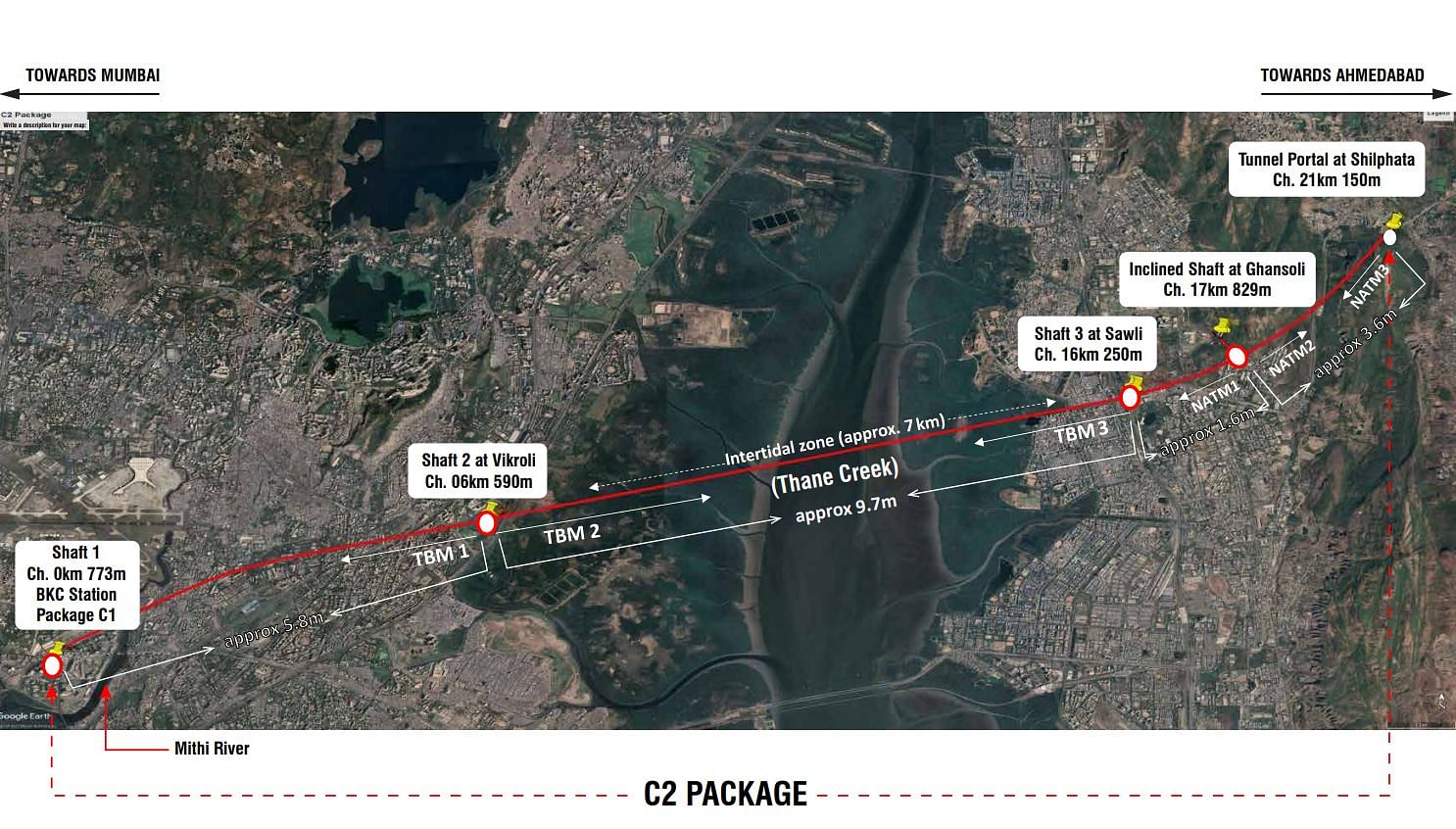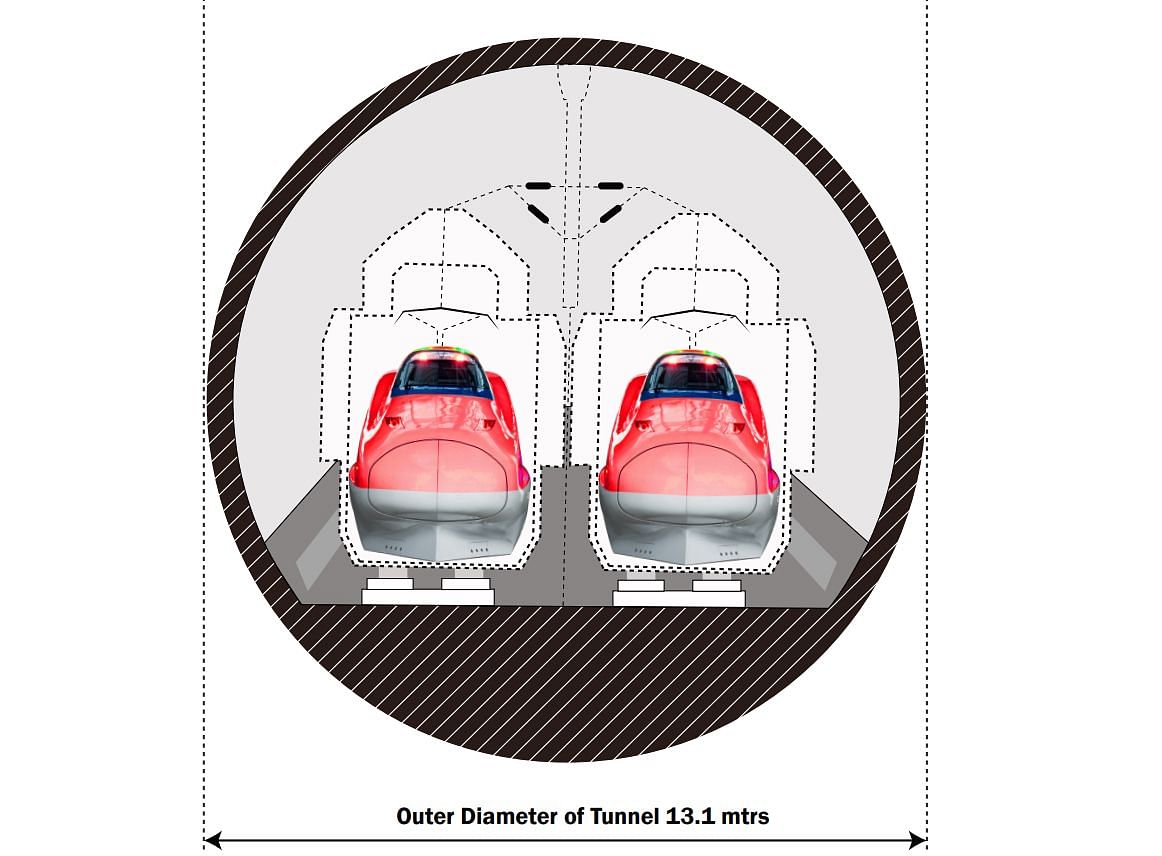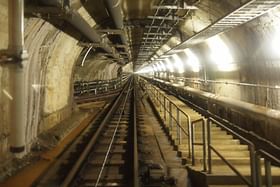In September last year, the NHSRCL invited bids for the tunnelling works for a 21 km long tunnel using a combination of tunnel boring machines (TBM) and the New Austrian Tunneling Method (NATM) for Mumbai-Ahmedabad High-Speed Rail Corridor.
Leading engineering firm Larsen & Toubro and Afcons Infrastructure are in the race to bag the prestigious project involving the construction of a 21 km long tunnel, including India’s first 7 km long undersea tunnel in Maharashtra for Mumbai-Ahmedabad High-Speed Rail Corridor, popularly known as the ‘bullet train’.
Widely considered a key project highlight, the 21km tunnel will be constructed at Thane creek between underground stations at Bandra-Kurla Complex and Shilphata in Maharashtra, which are around 35 kilometres apart.

In September last year, the NHSRCL invited bids for the tunnelling works for a 21 km long tunnel using a combination of tunnel boring machines (TBM) and the New Austrian Tunneling Method (NATM) for Mumbai-Ahmedabad High-Speed Rail Corridor.
According to the National High-Speed Rail Corporation Limited (NHSRCL), Afcons Infrastructure Limited and Larsen & Toubro Limited, have submitted their bids.
While three TBMs are expected to be deployed to build 16km of the tunnel, the remaining 5km will be constructed using the new Austrian tunnelling method (NATM). TBMs with a cutter head of 13.1-meter diameter will be used. Usually, 5-6 meter diameter cutter heads are used for urban tunnels used in MRTS – Metro system.

The tunnel will be a single tube with 13.2 meters in width. The authorities have already completed an underwater survey of the project.
The tunnel will be about 25 to 65 meters deep from the ground level, and the deepest construction point will be 114m below Parsik hill near Shilphata.
Three shafts at BKC (under package C1), Vikhroli, and Sawli at approximate depths of 36, 56 and 39 meters, respectively, will facilitate the construction.
Besides, an incline shaft of 42 meters at Ghansoli and a tunnel portal at Shilphata will facilitate the construction of approximately 5 km of the tunnel through the NATM tunnelling method.
The ambitious Mumbai – Ahmedabad High-Speed Rail project is a 508.17 km corridor connecting Mumbai with Ahmedabad through 12 stations.
While the project’s estimated cost is Rs 1.1 lakh cr, it has gone up for various reasons.
Per the current plan, the trains will operate at a 320 km/hr speed. There will be 35 trains per day in each direction with a frequency of 20 minutes in peak hours and 30 minutes in non-peak hours.
The train will cover the distance between Mumbai and Ahmedabad in 1 hour and 58 minutes with limited stops in Surat and Vadodara and will take 2 hours 57 min with stoppages at all stations. The tunnel will be between the underground station at Bandra-Kurla Complex and Shilphata in Maharashtra.
The 7 km undersea tunnel at Thane Creek will be the first undersea tunnel to come up in the country.
Seikan Tunnel, a 54 km dual-gauge railway tunnel in Japan, with a 23 km portion under the seabed of the Tsugaru Strait, which separates Aomori Prefecture on the main Japanese island of Honshu from the northern island of Hokkaido, is considered an engineering marvel.


